5 Best Chin Ups Alternatives (with Pictures!)
Though the conventional chin-up is considered to be a classic bodyweight exercise, there are certain instances where it is not an appropriate choice for a training program.
Fortunately, there are quite a number of possible alternatives that can take the place of the chin-up, many of which preserve the original intended benefits and muscular recruitment of the chin-up while simultaneously avoiding some of its more glaring disadvantages.
To name just a few of the possible chin-up alternatives, one can perform an assisted chin-up on the assisted pull-up machine, perform an inverted row or even switch to free weights training and try out the classic barbell row.
What are Chin-Ups?
Chin-ups are a multi-joint compound exercise considered to be a staple in many calisthenic or athletic training programs.

They are traditionally performed with the exerciser’s body weight as the sole source of resistance, and are often used as the primary source of back-and-bicep stimulus in the said calisthenic or athletic programs.
What Muscles are Worked by Chin-Ups?
Being a compound exercise, chin-ups are capable of recruiting the latissimus dorsi, biceps brachii, brachioradialis, the posterior head of the deltoids and the trapezius - all in a dynamic and highly intense fashion.
Other muscles that are recruited in an incidental or stabilizing manner are those of the core, the pectorals and the brachialis.
Why Should the Chin-Up be Substituted Out?
Despite the accessibility and relatively low impact of the chin-up, it may be too technically complex or physically demanding for novice bodyweight exercisers - hence the frequent need for an easier alternative.
Other instances where the chin-up may require substitution involve the need for a different or more intense form of training stimulus, either by way of performing a comparatively more complex calisthenic movement or by switching to free weight exercises.
Fortunately, because of the relatively simple mechanics of the chin-up (and the ease to which its muscular recruitment can be replicated), finding a substitute exercise is as easy as picking one from a list of similar movements (below).
What Makes a Chin-Up Alternative Suitable?
In order to ascertain whether a potential exercise is suitable as a chin-up alternative, the exerciser must first consider the alternative’s similarities to the chin-up, as well as whether it fits their specific training needs and future goals.

This largely comes down to whether the alternative exercise works the same muscle groups, as well as whether it involves similar biomechanics.
For the chin-up, this means that the alternative should at least work the biceps and latissimus dorsi, and involve some level of scapular movement and elbow flexion.
Similar Muscular Recruitment and Mechanics
The ideal alternative exercise to the chin-up will work the biceps, lats, trapezius and posterior deltoid head in a manner that involves elbow flexion, shoulder blade retraction and external shoulder rotation.
While not all effective alternatives will fit this bill, it is a good starting point for narrowing down the many options available.
Accounting for Exerciser’s Experience, Injuries, and Equipment
Apart from muscular recruitment and mechanics used, the alternative exercise should also fit the individual circumstances and needs of the exerciser themselves.
Individuals unable to perform the chin-up due to insufficient muscular strength will require a less demanding alternative, as will individuals unable to perform the chin-up due to a history of injury in the past.
Furthermore, any potential alternative must (clearly) also fit the equipment that the exerciser has available to them. Many chin-up performers do so from their home, and as such may not have complex and expensive equipment like an assisted pull-up machine or lat pulldown machine.
Chin Ups Alternatives
1. Assisted Chin-Ups
The first alternative to look at is the assisted chin-up, of which is performed with the use of an assisted pull-up machine or resistance band.
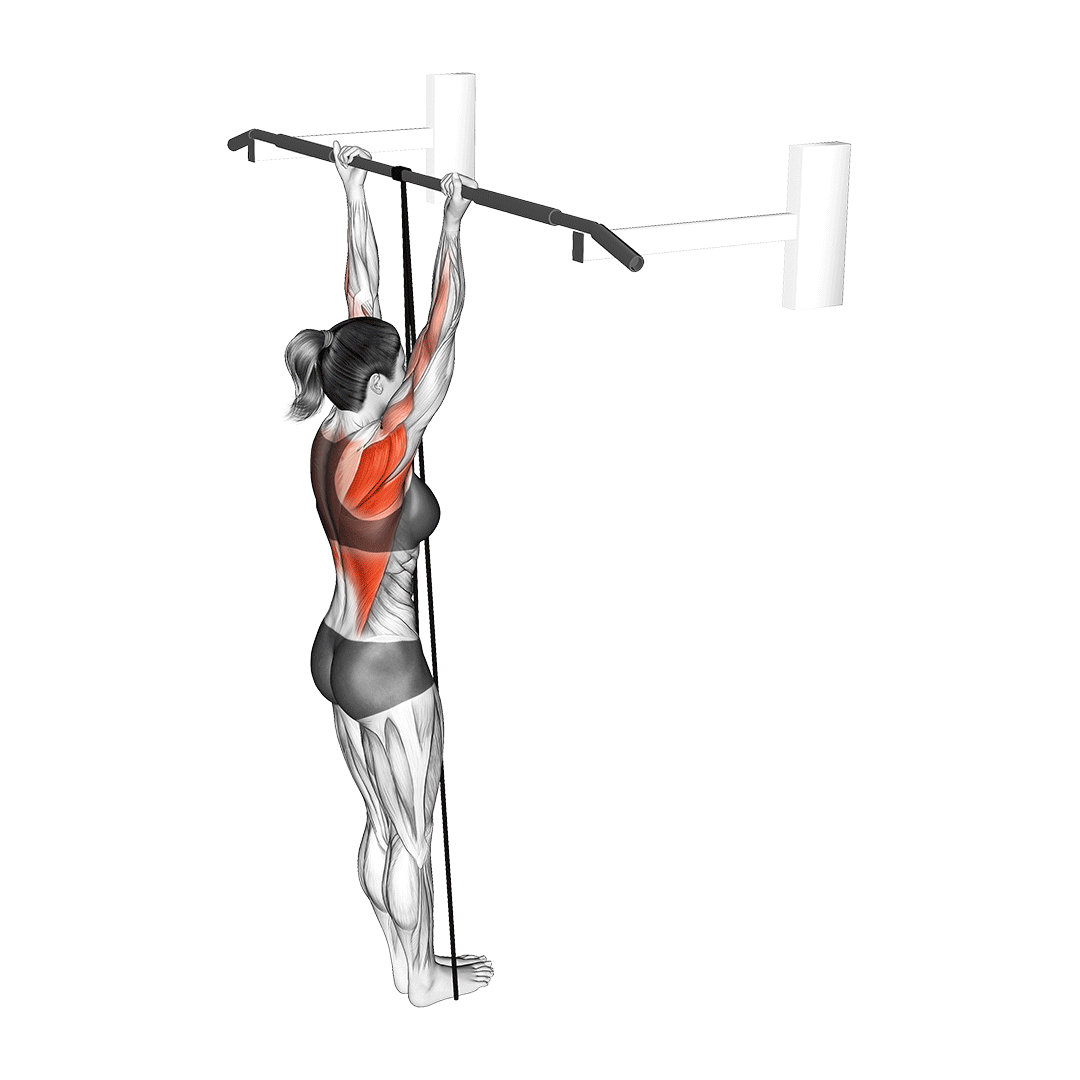
As the name may clue in, the assisted chin-up is mechanically identical to the conventional chin-up, only with a reduction in total resistance and intensity due to the machine or band weight changing how much of the exerciser’s own weight is being lifted.
Muscles Worked by Assisted Chin-ups
Assisted chin-ups will train much the same muscles as a conventional chin-up, meaning that the latissimus dorsi, biceps, posterior deltoid head, rhomboids, trapezius and brachioradialis will all be worked to a similar range of motion.
Benefits as a Chin-Up Alternative
The assisted chin-up is the ideal alternative to the regular chin-up for individuals who have yet to build sufficient strength to perform the latter variation for significant volume.
This allows novice exercisers or athletes just returning to training to build up their strength at a level of specificity unachievable with other chin-up alternatives.
Furthermore, assisted chin-ups can also act as the perfect alternative to the chin-up in programs that require a lesser level of intensity, such as one that already features several heavy back-focused exercises.
How-to to do an Assisted Chin-up
To perform an assisted chin-up, the exerciser will simply place their knees atop the padded section of the assisted pull-up machine, holding the overhead bar in the same way they would for a conventional chin-up.
Bending at the elbows and contracting the muscles of the back, they will then draw their chest upwards, assisted by the machine.
Once the bar is beneath the head in elevation, they will simply reverse the motion, thereby completing the repetition.
Alternatively, you can use a resistance band attached to your chin-up bar (pictured above).
2. Pull-Ups
For exercisers who simply wish to perform an exercise of similar intensity - or for those seeking greater focus on the muscles of the back - the pull-up is a perfectly suitable alternative to the chin-up, although it does feature a reduced involvement of the biceps brachii muscles.
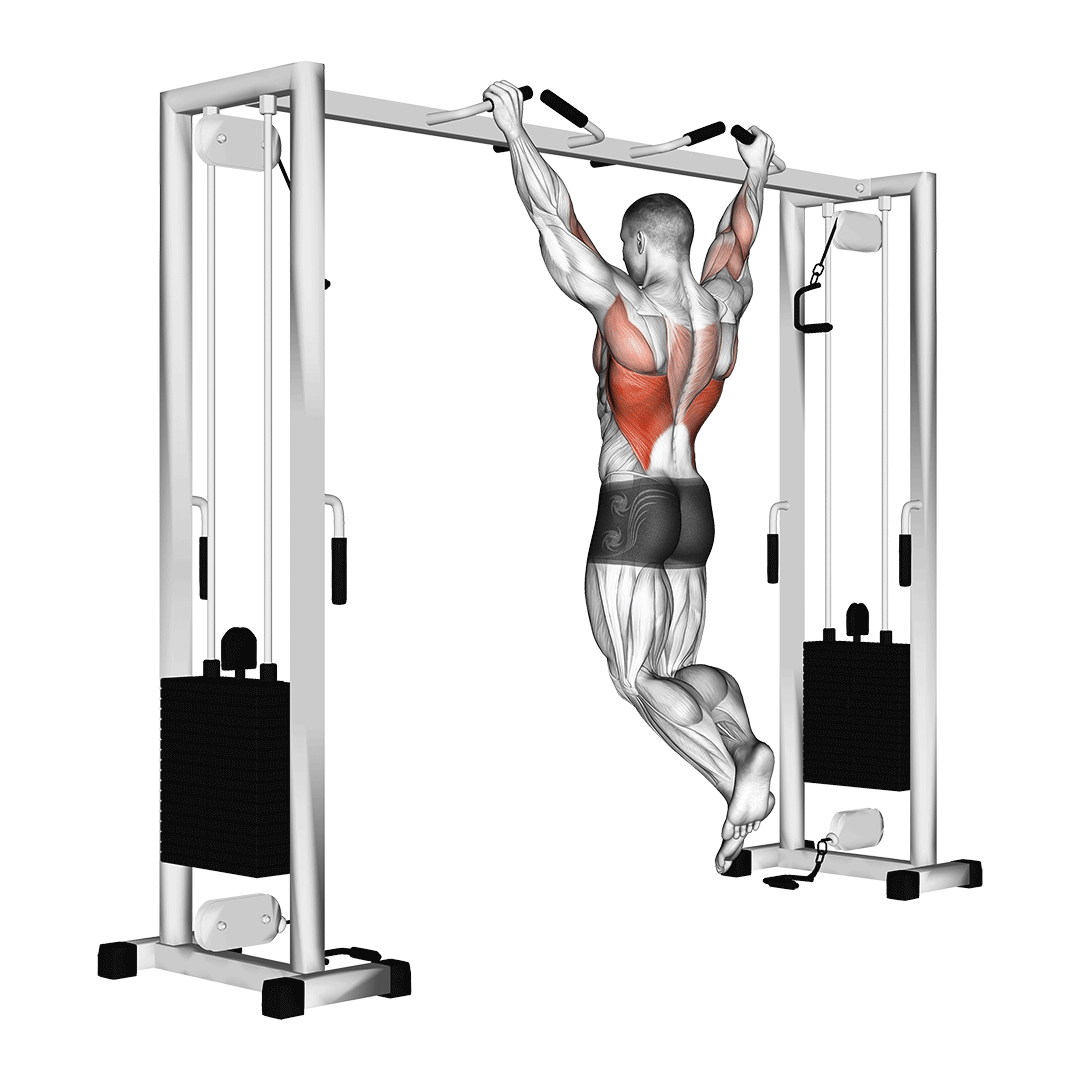
Much like the chin-up, the pull-up is traditionally a body weight exercise, and will require much the exact same equipment and technical skill. Chances are, if an exerciser can perform chin-ups, they can also perform pull-ups, though for fewer repetitions.
Muscles Worked by Pull Ups
Pull-ups train the same muscles as the conventional chin-up, although there is a greater focus on the muscles of the back.
This means the muscles of the latissimus dorsi, trapezius and rhomboids will be worked to a greater extent than the posterior deltoid head and biceps, though they are nonetheless still contracted dynamically.
Benefits as a Chin-Up Alternative
As was mentioned previously, pull-ups act as a perfect alternative to the chin-up for exercisers seeking greater back muscle stimulus. In addition, they are also similar enough in mechanics and intensity to act as a chin-up substitute for individuals that find the latter exercise to be boring or uncomfortable.
How-to do a Pull-up
To perform a repetition of the pull-up, the exerciser will enter a dead hang position by holding a pull-up bar overhead, hands set in an overhand or pronated grip.
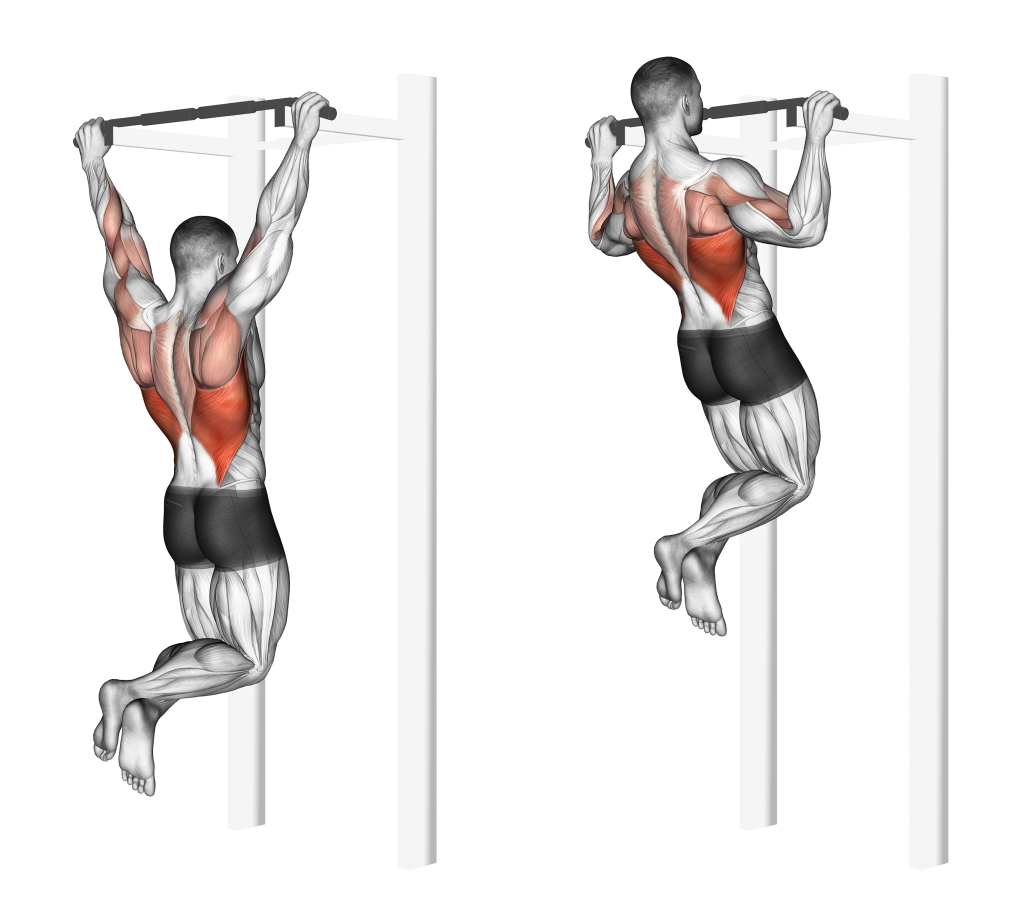
To begin the repetition, they will flex their lats and bend at the elbows, drawing their body upwards until the pull-up bar is beneath their head in terms of elevation.
From this point, they will then slowly reverse the motion, returning to the original dead hang position and thereby completing the repetition.
3. Inverted Rows
Another classic body weight exercise performed to train the muscles of the back and biceps; inverted rows or reverse rows may take the role of the chin-up in programs that call for greater volume and lower resistance, or for individuals without access to a pull-up bar with which to do chin-ups.

Much like chin-ups, inverted rows are multi-joint compound exercises that include elbow flexion and scapular movement as major mechanics in the movement pattern, and as such are largely interchangeable so long as the lower resistance of the inverted row is kept in mind.
Muscles Worked by Inverted Rows
Inverted rows work the latissimus dorsi, posterior deltoid head, rhomboids, trapezius, infraspinatus, biceps and brachioradialis.
Depending on whether an overhand or underhand grip is used, the focus of the exercise may be shifted towards or away from the biceps, with an underhand grip providing greater arm muscle recruitment and an overhand grip providing better back muscle recruitment.
Benefits as a Chin-Up Alternative
The inverted row is both more accessible and easier than the chin-up, making it excellent for individuals performing a deload or novice exercisers who are as of yet unable to perform chin-ups for sufficient volume.
Furthermore, inverted rows do not require a pull-up bar, and may be performed with any number of objects in a manner that chin-ups cannot, hence their greater accessibility as an exercise.
How-to do an Inverted Row
To perform an inverted row, the exerciser will suspend themselves from a barbell, TRX band or pair of gymnastic rings, ensuring that the handles are set high enough to allow the arms to be fully extended without the back of the torso touching the ground.

Keeping the chest facing the handles and the legs fully extended before them, the exerciser will bend at the elbows and “row” their body upwards, pulling the elbows behind the torso until they are parallel with the back.
From this position, the exerciser will then slowly reverse the motion, returning the arms to a state of full extension. Once they have returned to their original position, the repetition is now complete.
4. Underhand Grip Lat Pulldowns
Also known as a chin-up lat pulldown, the underhand grip lat pull-down is simply a regular lat pull-down performed with the hands in a supinated grip, thereby replicating the mechanics and muscular focus of a conventional chin-up with the use of a lat pulldown machine.
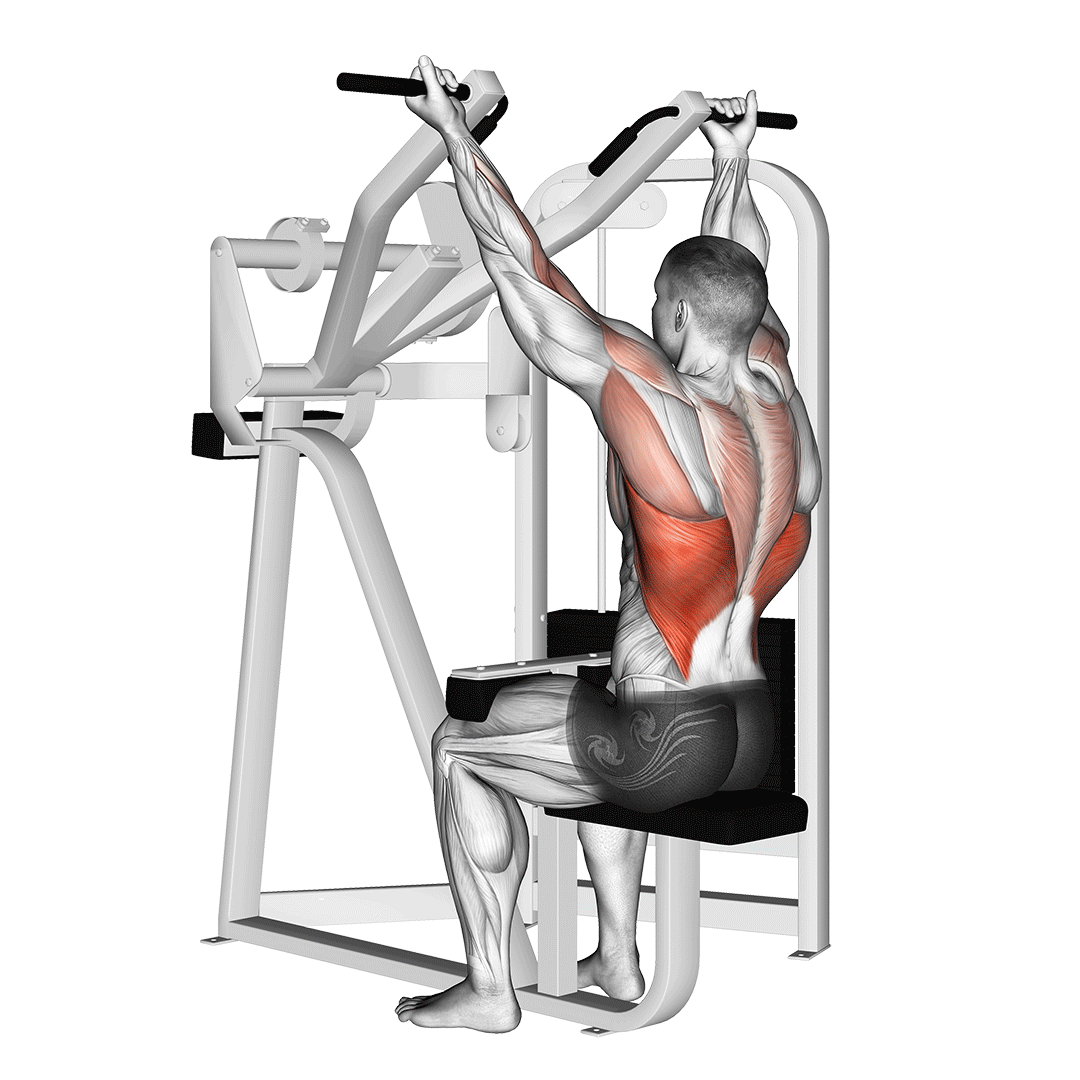
The chin-up lat pulldown is a multi-joint compound exercise that makes use of machine-based resistance to train the muscles of the back and biceps, and will require access to an overhead cable machine or a conventional lat pulldown machine.
Muscles Worked by an Underhand Grip Lat Pullpown
Underhand grip lat pulldowns work the muscles of the latissimus dorsi, trapezius, posterior deltoid head and rhomboids to a dynamic capacity - but will ultimately place greater focus on the biceps brachii, brachialis and brachioradialis.
Benefits as a Chin-Up Alternative
Performing chin-ups through the use of this particular machine allows for a far greater level of versatility to be achieved, and can let exercisers who do not have access to a pull-up bar or are unable to perform a conventional chin-up nonetheless retain the original benefits of a chin-up.
How-to do an Underhand Grip Lat Pulldown
To perform a repetition of underhand grip lat pulldowns, the lifter will seat themselves within the machine’s pads, gripping the handle over their head in an underhand grip.
From this position, they will then flex their back muscles and draw the elbows down and backwards, stopping once the bar is beneath their chin. Care should be taken to avoid any flaring of the elbows to the sides.
With the bar moved to bottom depth, the lifter will then simply reverse the motion, extending the arms overhead once again as the resistance of the machine pulls the handle back overhead, thereby completing the repetition.
5. Underhand Barbell Rows
For a free weight alternative to the chin-up, there are few exercises that hit the same muscles as well as the barbell row does.
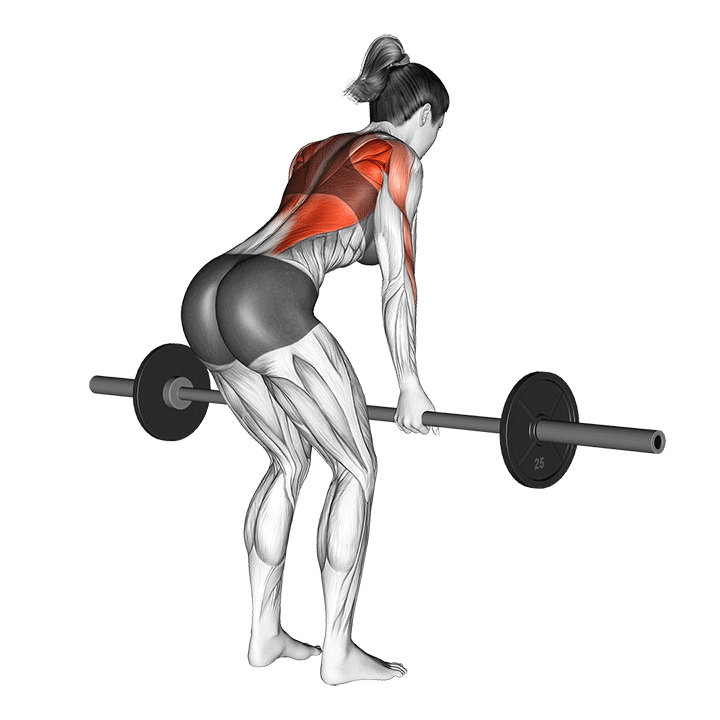
Much like chin-ups, barbell rows are a multi-joint compound exercise used to build muscle mass and strength in the biceps and the muscles of the back.
Because of the underhand grip and angle of resistance, the barbell row allows exercisers to target the muscles of the arms and back without the need to suspend themselves or the inherent limitation of their own body’s weight.
Muscles Worked by an Underhand Barbell Row
Barbell rows work the rhomboids, posterior deltoid head, biceps brachii, brachioradialis, trapezius, latissimus dorsi and much of the lower back in a dynamic manner - though they are known for being particularly effective at targeting those muscles of the mid-back, meaning the trapezius, lats and rhomboids receive the greatest benefit.
Benefits as a Chin-Up Alternative
Barbell rows are likely one of the best free weight alternatives to the chin-up, as they replicate not only the muscular recruitment pattern, but are also highly adjustable and similar in terms of complexity.
This allows absolute novice lifters who cannot perform a chin-up to achieve a similar type of training stimulus, as well as advanced athletes who have surpassed the point of meaningful progression from unweighted chin-ups.
How-to do an Underhand Barbell Row
To perform a repetition of the barbell row, the lifter will raise a loaded barbell from the ground, hands set shoulder-width apart along the bar in an underhand grip.
The body should be bent at the hips and knees, placing the torso at a near-parallel angle to the floor.
With the barbell and their arms hanging beneath their torso, the lifter will pull their shoulder blades together, drawing their elbows behind the back so as to row the barbell towards their sternum.
Once the barbell has been drawn sufficiently close to the torso, the lifter will then reverse the motion, allowing their arms to return to full extension, thereby completing the repetition.
Frequently Asked Questions (FAQ)
Can I Replace Pull-Ups with Chin-Ups?
Yes - chin-ups are an excellent replacement for pull-ups if you wish to place greater emphasis on your biceps, or if you find pull-ups to be just a bit too difficult for your liking.
Chin-ups still retain much of the same benefits and muscular focus as pull-ups, and as such may be substituted in a direct 1:1 ratio if needed.
How do I Substitute Chin-Ups with Dumbbells?
While there aren’t quite any identical dumbbell exercises to the chin-up, a dumbbell row is a pretty close approximation, and can even act as a substitute if you find yourself away from your pull-up bar.
Things can even be taken a step farther by performing the exercise in a sort of underhand grip, placing better focus on the muscles of the arms in a similar way to what a chin-up would achieve.
How to do a Pull-Up or Chin-Up if You Can’t?
If you haven’t quite built up the upper body strength to do a pull-up, a good way of progressing to that point is to perform assisted pull-ups or lat pulldowns.
Both exercises will train the muscles needed to execute a pull-up, and can help newer lifters familiarize themselves with the mechanics of vertical pulling exercises.
Final Thoughts
Keep in mind that your choices are not solely constrained to those listed in this article, and that there are quite a number of ways to keep the benefits of a chin-up without actually performing them.
Chin-up variations, altering repetition schemes or even breaking the exercise up into a few isolation movements are just a few strategies that may be employed.
Nonetheless, whether you have chosen to perform a substitute exercise or to try a different route, remember to ensure that every exercise is performed with correct form, and that your recovery methods are optimized as much as possible.
References
1. Hewit, Jennifer. (2018). A Comparison of Muscle Activation during the Pull-up and Three Alternative Pulling Exercises. Journal of Physical Fitness, Medicine & Treatment in Sports. 5. 10.19080/JPFMTS.2018.05.555669.
2. Sperandei, Sandro & Barros, Marcos & Silveira-Júnior, Paulo & Oliveira, Carlos. (2009). Electromyographic Analysis of Three Different Types of Lat Pull-Down. Journal of strength and conditioning research / National Strength & Conditioning Association. 23. 2033-8. 10.1519/JSC.0b013e3181b8d30a.
3. Fenwick CM, Brown SH, McGill SM. Comparison of different rowing exercises: trunk muscle activation and lumbar spine motion, load, and stiffness. J Strength Cond Res. 2009 Mar;23(2):350-8. doi: 10.1519/JSC.0b013e3181942019. PMID: 19197209.
